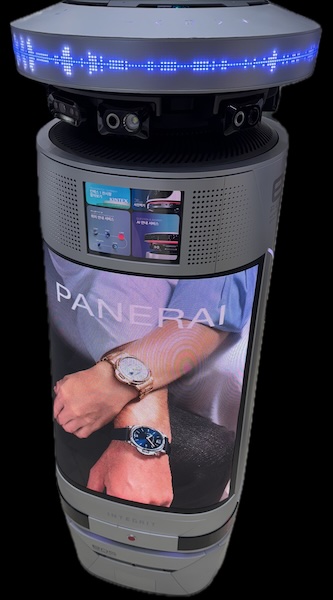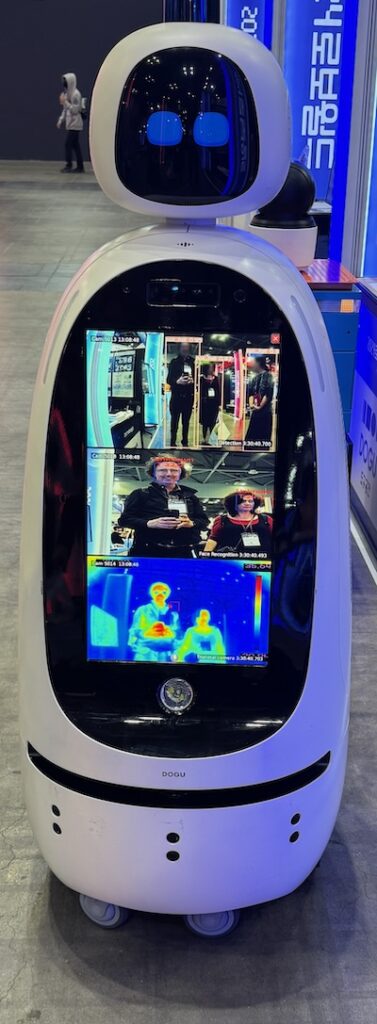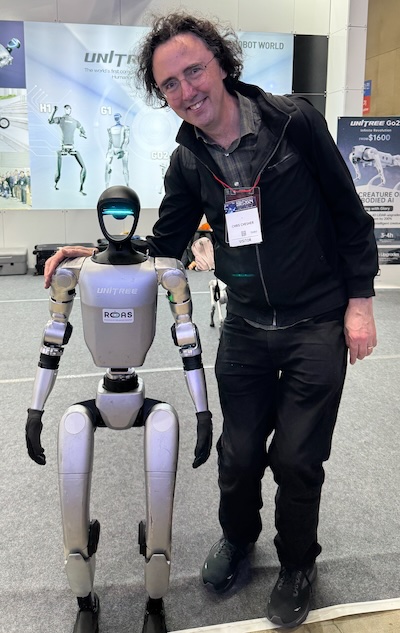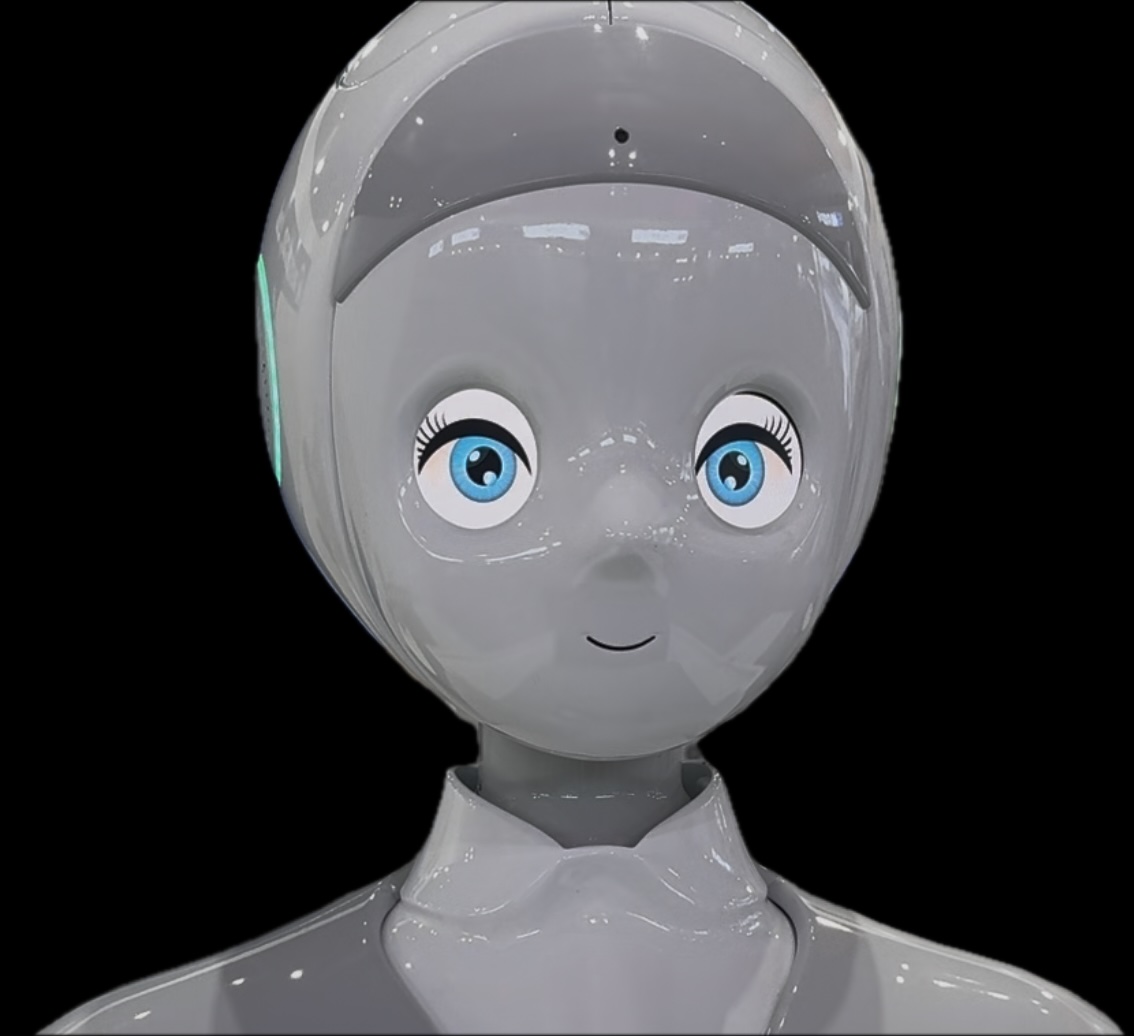October 2023
I first attended RobotWorld in Seoul back in 2010, when the expo was a relatively modest affair, with only a handful of impressive demonstrations amid clunky prototypes and rows of servo-motor vendors. Returning in 2024, I expected to be overwhelmed by sleek humanoids and fully autonomous service droids—and while there were definite signs of progress, I wasn’t exactly awed across the board. A few machines genuinely stood out, but for the most part, I left with more tempered impressions than I’d anticipated.
A Maze of Sections—No “Main Stage” Needed
Unlike some expos boasting a grand centre stage, RobotWorld spreads across dedicated zones: hospitality, industrial, surveillance, companion robots, and more. Roaming from one section to the next reminded me how much had changed—and how much hadn’t. Where 2010’s halls had large dead spaces and rudimentary stands, now every corner buzzed with motion. Yet, not every demonstration felt like a major leap forward.
Integrit and a Host of Rolling Advertisers

In one section, I discovered the Integrit E5 Platy, a nearly five-foot-tall, barrel-shaped “media machine” festooned with screens and ringed by cameras. It wasn’t alone—several other wheeled robots patrolled the venue, from sleek cylinders showcasing adverts to a slightly eerie empty pram that tailed a woman, presumably tracking her location via sensors or a mobile link.
While these ad-robots and follow-bots were intriguing, they didn’t strike me as game-changers. They each had novelty value but felt more like advanced marketing gimmicks than indispensable daily tools.
Delivery & Drinks: Restaurant Robots Revisited
Moving along, I found the restaurant and hospitality section far more polished than my 2010 visit. Multi-tiered delivery robots with pleasant, if impersonal, digital faces have become something of a standard.
• Thira Robotics displayed a minimalistic design with a single digital expression on a screen, pushing small boxes of product samples.
• Segway’s Servebot S1 (via this link) quietly whirred around corners with near-flawless collision avoidance—indicative of real engineering progress over the clunky tray-carrying bots of a decade ago.
• Commercial kitchen robots expertly operating deep fryers – thankfully without the scalding oil.
I even watched a robot expertly pour beers—though it was still morning, so I declined a sample. Fun to watch, but again, I couldn’t help thinking: Is this truly revolutionary or just a neat party trick?
Industrial Corridors: The Backbone
One strong note of progress was on display in the industrial components sections. Stalls offered a dizzying array of advanced sensors, multi-axis servo motors, wheels, grippers, and AI-powered control boards. This behind-the-scenes tech wasn’t glamorous but hinted at real evolution since the 2010 era. An entire ecosystem of smaller firms is now building the parts that make advanced mechatronics and semi-autonomous capabilities possible.
Still, as I walked the aisles, I found myself wondering if the final products made full use of these innovations. Outside of the hospitality/advertising domains, many concept robots felt more driven by their technical innovations than design for particular physical and social spaces.
The Surveillance Conundrum

Another unsettling feature of the expo showcased the ongoing evolution of surveillance robots. These machines combine face recognition, thermal imaging, and real-time tracking to profile individuals in crowded environments—originally pitched as a health and safety measure (like COVID detection). Seeing your own face rendered on a screen with a bounding box and a heat map is a potent reminder of the intangible lines between public safety and personal privacy.
As one engineer explained the tech, I wondered how we might reflect on these developments in a few years. Would they become as ubiquitous as CCTV, or face resistance from citizens wary of being perpetually monitored? It’s a delicate balance, and the technology is accelerating faster than legislation or public discourse can keep up.
Meeting Unitree: The Exceptions that Impress
One highlight was stumbling across Unitree’s stand, featuring its G1 humanoid alongside the “canine” G02. The G1 walked with impressive balance, gracefully navigating ramps and uneven floor sections, waving at the crowd and even coming over to visitors and shaking hands. Despite its smooth movement, its servo motors were surprisingly noisy. And look closely and you’ll see operators quietly controlling the robots.

Even so, I did feel that spark of awe—the kind of seamless, organic motion that suggests real potential for advanced robotics in the near future. Compared to the precarious prototypes I recall from 2010, Unitree’s demonstration felt like a genuine leap in engineering finesse.
Tech Dreams, Measured Realities
So, did RobotWorld 2024 blow my mind? Not exactly. Yes, the expo floor teemed with more polished offerings than ever before. Yes, the humanoid walkers and multi-tray restaurant robots have come a long way from their clumsy ancestors. But outside of a few standouts—like Unitree’s agile bipeds and quadrupeds—there was still a sense that many machines remain more technical demonstration than necessity.
From barrel-shaped advertising bots to beer-pouring novelties, it’s hard to ignore the gap between wow factor and real-world application. Perhaps as these technologies continue to mature (and the prices come down), we’ll see them transcend expo demos and integrate meaningfully into our lives. Until then, I’ll remember my 2010 visit as the era of optimistic beginnings, and 2024 as a snapshot of incremental progress—tantalising glimpses of the future, yet still waiting for their truly transformative moment to arrive.


Leave a Reply